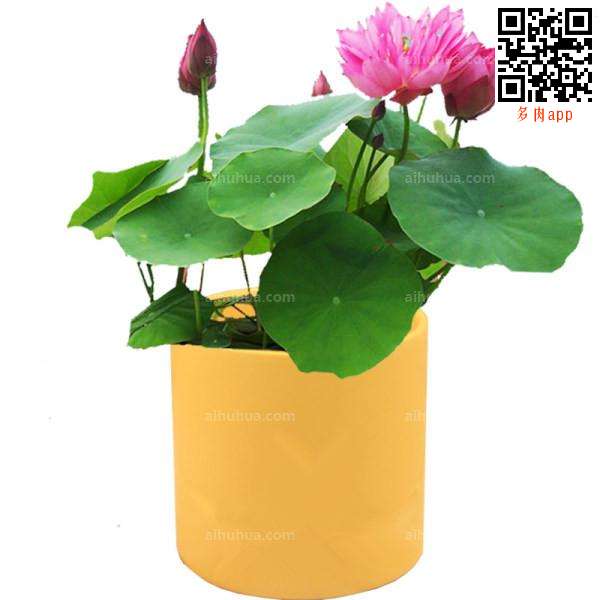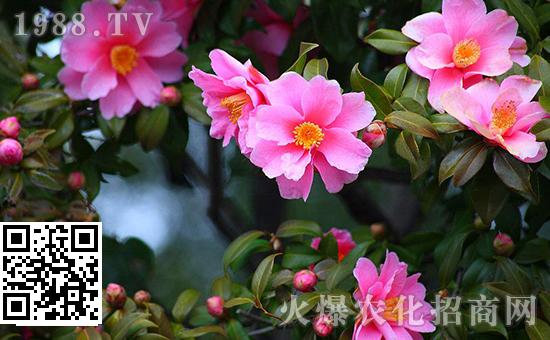How do water lilies reproduce?
How to reproduce water lilies, water lilies are often used to divide underground stems to propagate. Pond water lilies are mainly used for arranging water features and decorating fountains in pools, usually planted in flowerpots and then kept in pools. Water lilies grow in the basin for one year, and the underground stems and fibrous roots will be full of pots. They need to be planted separately every spring. Each pot can be divided into about 3 pots, and the plants can flourish and blossom in that year.
The overwintering mother plant moved out of the pot in front of Ching Ming Festival, washed away the soil, cut the whisker root, took 1 group of buds to 2 groups of buds, a section of about 10 cm, cut open, and planted three sections in a large pot raised in the pool. First put a layer of soil on the bottom of the basin, spread hard long-term organic fertilizer such as feather hooves, then cover a layer of soil and then plant human stems, fill the soil solid, and cover the basin with a layer of large-grained river sand.
Straight root stem type water lilies, division and planting, should be the apex out of the water, can also be higher than the edge of the pot, planted immediately into the pool. The initial pool water should be shallow, if the pool must maintain a fixed water depth, you can use bricks or basin cushions under the basin. As the petiole grows and lengthens, the gasket is gradually removed.
If it is planted directly in the soil of the pool, it is not necessary to transplant and distribute it year after year. However, topdressing should be carried out in the second year, and cake fertilizer or manure and clay can be mixed into mud to dry and scattered into the pond. According to the growth and needs of the plant, it was dug up and planted every 3 ~ 4 years.
Water lilies can also be sowed and propagated. After the seeds of water lilies are ripe, they are easily scattered in the water, so they can be collected in cloth bags when the seeds are ripe. The seeds should be stored in a container filled with water and should not be put dry, otherwise they will lose their vigor. The seeds will sprout half a month after sowing before and after the Qingming Festival in the second year. The water should not be too deep, and it is appropriate to take 5cm to 10cm.
When the temperature is stable above 17 ℃, it can be moved to outdoor management, and the diameter of the cylinder is not less than 35 cm when it is finally planted. Some varieties can blossom in the same year, and most varieties can not blossom until 2 or 3 years later. This method is often used in the propagation of water lilies. From February to April, when the weather turns warm and the buds have already sprouted, the roots are cut into several sections with a sharp knife. Each section contains new buds, requiring that the new buds are full, and the planting depth should not be too deep. Buds should be parallel to the soil surface. The above is an introduction to how water lilies reproduce.
Nymphaea alba water lilies: how to raise water lilies / how to reproduce water lilies business cards water lilies Nymphaea alba alias: meridian, water celery, Ruilian, water water flowers, small lotus classification: aquatic flowers genus: plant kingdom angiosperm class dicotyledonous plants class Nymphaeaceae water lilies in full bloom: water lilies in spring and summer are perennial aquatic herbs; rhizomes are thick. Petiole Terete, slender. Leaves oval, floating on the water surface, entire, leaf base heart-shaped, leaf surface dark green, dark purple on the back. Leaf type 2: floating leaves are round or ovate, the base is curved, heart-shaped or arrow-shaped, often without water leaves; submerged leaves are thin and fragile. Sleeping lotus solitary, floating or protruding to the surface; calyx four, green; petals usually eight. Fruit Obovate, ca. 3 cm long. Flowers large, beautiful, floating or above the water, blooming during the day and closing at night; sepals nearly free; petals white, blue, yellow or pink, in many whorls, sometimes gradually turning into stamens; anthers.

- Prev

What about the rotten roots of the iron tree?
What about the rotten roots of the iron tree? After 2 months of planting, the bare-root iron tree has withered leaves and rotten roots, and the rotten roots are mainly caused by the following reasons. First, because the iron tree's bare roots are transported from the south to the north, without the necessary wind and cold protection measures, because its roots are seriously damaged, it can no longer provide water for the plant.
- Next

How to raise tea plum?
How to raise tea plum? tea plum is usually propagated by cutting. it is not allowed to blossom within 1-2 years after cuttage, in order to cultivate the tree shape, and it can only blossom after 3 years. In the management, we should mainly master soil, fertilizer, water and light. The rotten leaf soil with acidic, loose and fertile characteristics should be selected in the basin soil to be suitable for the growth of tea plum.
Related
- Fuxing push coffee new agricultural production and marketing class: lack of small-scale processing plants
- Jujube rice field leisure farm deep ploughing Yilan for five years to create a space for organic food and play
- Nongyu Farm-A trial of organic papaya for brave women with advanced technology
- Four points for attention in the prevention and control of diseases and insect pests of edible fungi
- How to add nutrient solution to Edible Fungi
- Is there any good way to control edible fungus mites?
- Open Inoculation Technology of Edible Fungi
- Is there any clever way to use fertilizer for edible fungus in winter?
- What agents are used to kill the pathogens of edible fungi in the mushroom shed?
- Rapid drying of Edible Fungi

